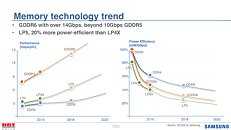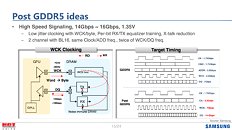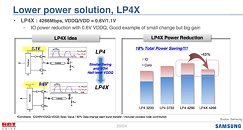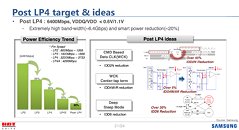Tuesday, August 23rd 2016

Samsung Bets on GDDR6 for 2018 Rollout
Even as its fellow-Korean DRAM maker SK Hynix is pushing for HBM3 to bring 2 TB/s memory bandwidths to graphics cards, Samsung is betting on relatively inexpensive standards that succeed existing ones. The company hopes to have GDDR6, the memory standard that succeeds GDDR5X, to arrive by 2018.
GDDR6 will serve up bandwidths of up to 16 Gbps, up from the 10 Gbps currently offered by GDDR5X. This should enable memory bandwidths of 512 GB/s over a 256-bit wide memory interface, and 768 GB/s over 384-bit. The biggest innovation with GDDR6 that sets it apart from GDDR5X is LP4X, a method with which the memory controller can more responsively keep voltages proportionate to clocks, and reduce power-draw by up to 20% over the previous standard.
Source:
ComputerBase.de
GDDR6 will serve up bandwidths of up to 16 Gbps, up from the 10 Gbps currently offered by GDDR5X. This should enable memory bandwidths of 512 GB/s over a 256-bit wide memory interface, and 768 GB/s over 384-bit. The biggest innovation with GDDR6 that sets it apart from GDDR5X is LP4X, a method with which the memory controller can more responsively keep voltages proportionate to clocks, and reduce power-draw by up to 20% over the previous standard.




57 Comments on Samsung Bets on GDDR6 for 2018 Rollout
1070 vs 980
1080 vs 980Ti
www.computerbase.de/2016-08/msi-geforce-gtx-1060-oder-sapphire-radeon-rx-480/2/#diagramm-performancerating-1920-1080
More interesting, however, is power consumption improvements (same source, total system power consumption):
980 => 1060
235w => 188w, new gen consumes 80% of the prev gen
390 => 480
364w => 232w, new gen consumes 64% of the prv gen
nVidia is still quite ahead in perf/watt, but gap is smaller.
When/if Nvidia releases a 1080 Ti then compare that to the 980 Ti to see what improvement Pascal offers. Prices don't determine where a GPU falls within Nvidia's stack.